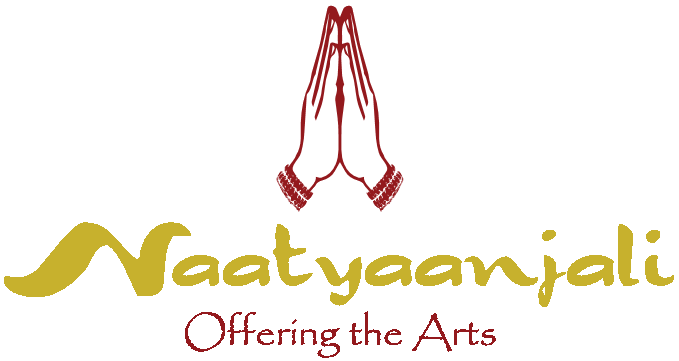The Expressive Dance
‘To dance is to give oneself up to the rhythms of all life.’
‘Dance is a beauty filled with feelings and passion’.
Bharathanatyam is interpreted as BHAva (expression) + RAga (music) + THAla (rhythm) + NATYAM (dance drama).
The 3 aspects to dance are Nritta, Nritya and Natya.
- Nritta – pure dance without any emotions, expressions or sahityam. The steps, movements or gestures do not convey any message or thought. Adavus form the basic component of Nritta.
- Nritya – has sahityam (a sentence which means something). It involves emotions, expressions and the meaning is shown via the leg, hand, neck, head and eye movements.
- Natya – is dance drama and its main technique is Abhinaya. Expressions are used to act out a story. It is a language of gestures, poses and mime.
Arangetram is interpreted as Aranga (raised floor) + Etram (climb). Upon the completion of the disciple’s training in Bharathanatyam (which takes at least 10 to 12 years), the proud guru (teacher) then presents her disciple to the the public via a Bharathanatya Arangetram.
In every Bharathanatya Arangetram, a margam (a set of traditional items) is performed. Balasaraswati, the great exponent of dance, compares this to a grandly structured temple. The extract is as follows:
We enter through the gopuram (outer hall) of alarippu, cross the ardhamandapam (half-way hall) of jathiswaram, then the mandapam (great hall) of sabdam and enter the holy precinct of the deity in the varnam. Dancing to the padams is akin to the juncture when the cascading lights of worship are withdrawn and the drum beats die down to the simple and solemn chanting of the sacred verses in the closeness of God. The thillana then breaks into movements like the final burning camphor accompanied by a measure of din and bustle. In conclusion, the devotee takes to her heart the God she has so far glorified outside and the dancer completes the traditional order by dancing to a simple devotional verse.
Bharathanatyam differs from other dance forms because of its expressive qualities (the Rasa element) which are not found much or not emphasized in the other forms. The items performed will depict various Bhavas ie the emotional and existing condition or state of the character portrayed. A combination of Bhavas result in Rasas – the quality that bridges the understanding between the artist and the audience. Bhava, ‘state of being’, is divided into Sthayibhava brought forth by Vibhava, Anubhava and Sanchari/Vyabhichari bhava. They are defined as follows:
Vibhava: the causes of emotions or determinants. They are the hero and heroine, the objects that excite the emotions such as qualities, actions, decorations and environment.
Anubhava: the effects of emotions. These are the physical actions to set down the emotions portrayed.
Sanchari/Vyabhichari bhava: the subordinate emotions. These are the transient moods that move in relation to the sentiments towards different kinds of objects.
The dominant state of mind resulting from the above 3 bhavas and fully occupying the mind is called Sthayibhava. Sthayibhava thus leads to the 8 rasas namely:
| Rasas | Sentiments | Bhava (moods) |
| Sringara | Erotic | Love |
| Haasya | Comedy | Satire |
| Karuna | Compassion/Sympathy | Pathos |
| Roudra | Anger | Fury |
| Veera | Bravery/Heroism | Valour |
| Bhayaanaka | Terror/Fear | Fright |
| Beebhatsa | Disgust | Aversion |
| Adbutham | Wonder | Amazement |
| Saantha | Peace/Tranquility | Serenity |
Nandikeshwara in his Abhinayadarpana book mentioned a ninth rasa – Santha (peaceful). Today, this is accepted as the 9th rasa, leading to the Navarasas. To attain the mood of Santha is a difficult task; this can only be experienced through spiritual practice.
Through dance, you are connected directly to the Gods.
Devotion, the Sthayibhava, is one of the moods noted in varnams. When you love God so much, you are devoted to HIM. Here, the Shringara (erotic love) expressed has a different meaning – not physical but a soul to the Supreme Being. The Vibhavas are God and devotee, the Anubhava is the prayer to bow at God’s feet and the Sanchari bhavas could be Roudra, Veera and Karuna.
No tags for this post.

